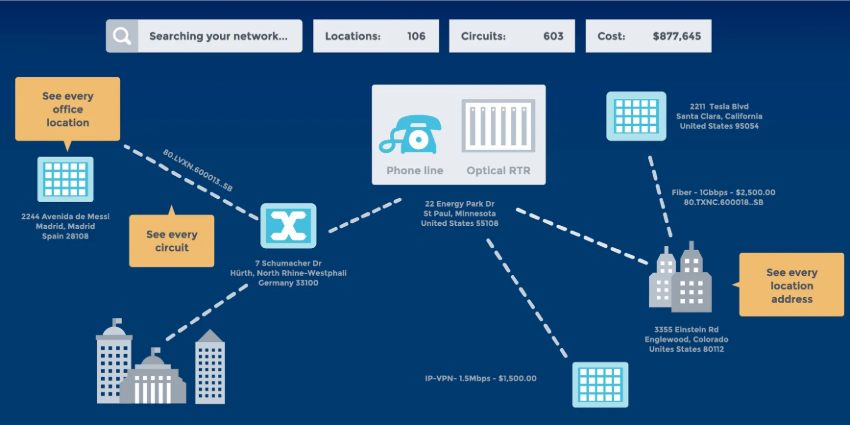For many companies today, the transition into the cloud and a new age of digital transformation starts with updating the communication stack. Effective communication is crucial to the success of any business, whether it’s the conversations held between collaborating colleagues or discussions between agents and customers.
Unified Communications as a Service, or UCaaS, empowers companies to align their internal communications strategy with a single, synchronised platform. The right UCaaS technology provides a cloud-based environment for accessing video, voice, messaging, presence, and other collaborative tools in one pane of glass.
CCaaS represents the other side of the cloud-based communications coin. With CCaaS solutions, companies can align all of their external communications strategies. CCaaS systems empower employees to connect with clients through various channels like SMS, voice, online chat, social media, and email, all without leaving a unified platform.
In the past, these two ecosystems have remained siloed and separated, each focusing on its own side of the communications landscape. However, companies quickly discover the benefits of bringing UC and CC together.
Why Combine UCaaS and CCaaS?
Alone, both UCaaS and CCaaS represent powerful tools for business leaders. UCaaS makes it easier to align distributed employees wherever they are, strengthen collaboration, and streamline the flow of knowledge throughout the business. CCaaS supports the development of a rich, omnichannel contact centre capable of boosting customer satisfaction and loyalty.
However, these two tools shine best when they’re combined. Aligning UCaaS and CCaaS allows for a more comprehensive communication strategy, where external and internal connections are fully aligned. Together, UC and CC platforms:
- Improve customer service: By making it easier for service agents to access specialist support, knowledge, and information from the UC environment.
- Increase efficiency: Aligned UCaaS and CCaaS systems allow companies to automate various tasks, from call routing to tracking agent availability.
- Enhance collaboration: Bringing UCaaS and CCaaS together breaks down unnecessary silos in the business environment, improving decision-making opportunities.
- Transform data management: Bringing UCaaS and CCaaS together makes tracking and managing customer service data and performance metrics easier.
- Reduce costs: An integrated CC and UC environment is often more affordable to purchase and less expensive to maintain than two separate platforms.
“Today, businesses are under more pressure than ever to be agile and adapt to rapidly changing markets,” CallTower CRO William Rubio stated. “In order to stay competitive, they need to have the right tools in place to communicate and collaborate effectively. This is where combining UCaaS and CCaaS can be a powerful and streamlined solution.”
Rubio discussed the nuances of combining UCaaS and CCaaS recently on UCTV.
As demand for both UC and CC tools in the cloud continues to accelerate, more companies and vendors alike are beginning to recognise the value in aligning these two ecosystems. The question is, how do you start combining your technology?
5 Steps for Bringing UC and CC Together
Combining UC and CC environments allows businesses to create an agile, scalable, and collaboration-driven space for their employees.
The combined UC and CC environment can easily become the new “digital workplace” for today’s hybrid and remote workers, ensuring everyone in a workforce remains aligned, supported, and informed. However, transitioning into a combined environment can be challenging.
Here’s how any business can begin to combine its networks.
Step 1: Define a Cloud Strategy
First, it’s worth looking at the complete cloud strategy for the business and how the company plans on moving technology into an agile environment.
Organisations with a pre-existing UCaaS solution might want to look for a vendor capable of integrating their CCaaS services with their current platform. Other companies may prefer to purchase both UCaaS and CCaaS services at once from the same vendor to simplify billing and technology management.
Step 2: Search for Integration Support
Most companies already have pre-existing software solutions and cloud-based tools they rely on to empower their teams, from CRM technology to ERP systems.
Existing tools need to be able to integrate with your new communication platforms to ensure a combined UC/CC environment can become the ultimate all-in-one workplace for employees,
Look for a UC and CC provider which supports integrations for popular tools and flexible customisations within the communication ecosystem. Some businesses may even want to consider using access to APIs and SDKs for building new connections between different apps.
Step 4: List your Priorities
Before implementing new UC and CC tools, companies need to know the services on offer can support all of their needs and business goals. For instance, a business investing in data analytics to improve customer satisfaction and performance should ensure the platforms they choose have access to data collection and analysis tools.
Many businesses will also need to think carefully about the security and privacy standards implemented among their UC and CC technology. For example, it’s often worth checking whether the platform supports access controls, multi-factor authentication and encryption.
Step 3: Implement Training and Support for Team Members
Employees must feel comfortable and confident using the new technology to make the most of UC and CC tools. Companies investing in a combined ecosystem should ensure they’re prioritising user experience when choosing the right vendor and thinking about the everyday workflows of their teams. It’s also worth searching for a vendor capable of offering training and documentation.
The right training strategies can help to boost the rapid adoption of new communication technologies and reduce the risk of Shadow IT taking over in the workplace.
Step 5: Plan for the Future
A combined UC and CC solution helps businesses future-proof their communications plan with an ever-scalable environment of powerful tools. However, the only way to ensure you can adapt to a changing communications environment is to look at your investment holistically. Think about the features you may want to implement into your UC and CC systems going forward, from AI and automation to IoT connections.
Even if you only need basic functionality from your UC and CC tools now, working with a vendor with a solid commitment to research, development, and the delivery of innovative new features will help you to stay one step ahead of the competition.
While combining UC and CC can seem like a complex concept, the right vendor will make it easier to align your communication strategy and build the ultimate digital workplace. CallTower specialises in combining the power of UCaaS and CCaaS systems from vendors like Microsoft, Cisco & GoTo to enable customers to build fully integrated and flexible hybrid solutions.







